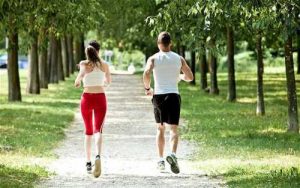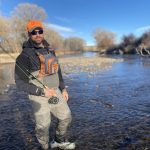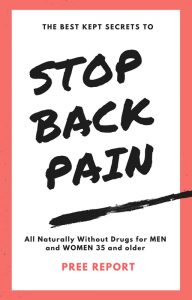How will you stay active this spring?

Locally, people often use running as a way to get and stay active. What I like about running is that it is easy to set goals and monitor your progress. There are also several local running groups that provide you a way to get into running.
However, there are also some pitfalls associated with running. In fact, some studies have shown that 50% of runners will experience an injury during any given year.Today I would like to talk about three common issues associated with running and exercises to address them.
1: Low Back: In the clinic I see a link between running and low back pain. Many of the runners I see who have low back pain also have tightness in their hips. This is especially true with tightness in the front of the hips.
I feel the most effective way to stretch this area is to kneel in a lunge position focusing on stretching your back leg. The stretch should be held for 30-60 seconds.
2: IT Band Syndrome: Your IT band is a band of connective tissue along the outside of your upper leg that runs from your hip all the way to the outside of your knee. The key to managing IT Band syndrome is to strengthen your hip muscles to minimize stress to the band.
The most effective exercise for strengthening the outside of your hips is to stand on one leg unsupported by your hands and swing opposite leg out to the side. This exercise should be performed for 15-20 repetitions.
3: Lower leg problems: I see a large number of runners with either achilles tendinitis, plantar fasciitis or bursitis. In my opinion, this has to do with flexibility with problems in the lower leg. Plantar fasciitis in particular responds very well to calf stretching. There are several ways to stretch your calf.
I think the simplest and most effective way to stretch the calf is to find a step or a curb and hang your heels off the side and let them fall until a stretch is felt. This stretch should be performed for 30-60 seconds and performed with knee bent and knee straight.
All of these things are helpful to make your running experience less painful.
The take home message is that runners must be mindful of their mechanics and problems areas. This is especially true given the rates runners experience pain and injury.
The other thing to think about is your running mechanics may be irritating either your muscles or joints. There are many resources to address running mechanics but I think that it is helpful to have someone who can identify flaws in your gait.
If you would like to address your some of your of the mobility or stability problems that is affecting your running contact us at Siskiyou Physical Therapy.
Jon Hill, DPT, Licensed Physical Therapist with Siskiyou Physical Therapy
If you like this post or have a question. Comment below.



